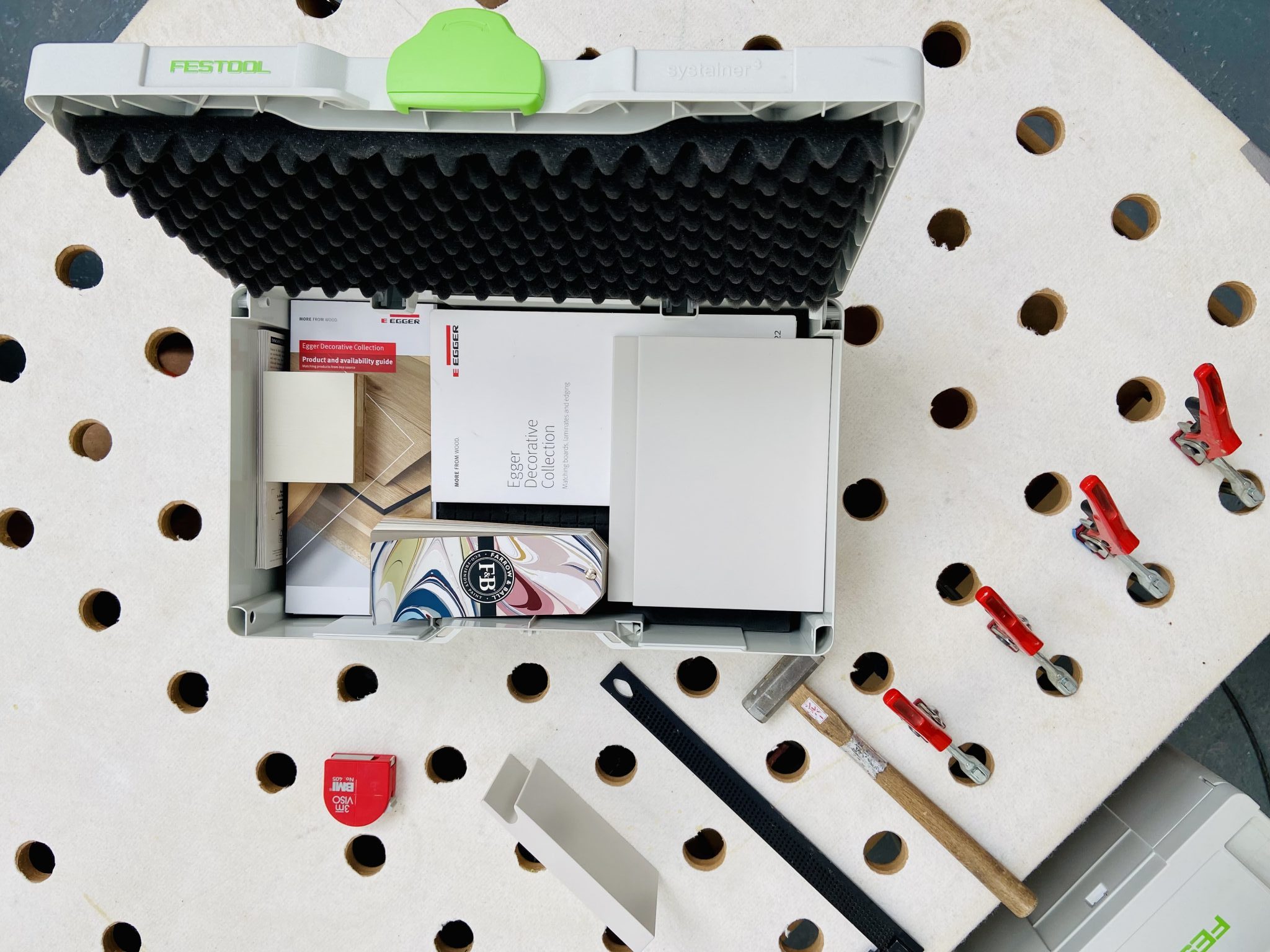What material & surface we use
You can choose from solid wood or wood veneer applied mainly on MDF or Plywood.
Laminate surfaces are suitable for the production of furniture and interior design parts of the interior in many colours, decor and durability.
Laminate is usually bonden on MDF, MFC and plywood. It is suitable both on the inside of the cabinet and on external surfaces. Manufacturers like Egger or Fenix are factory-processed surfaces of various colours and decor.
Hand-painted kitchens have a natural look and are ready for the future, because you can easily grind and repaint it.
Frequently used surfaces also include the Spray painted, which gives you a smooth surface that looks solid and pleasant.
Hand and spray painted surfaces can be supplied from various paint manufacturers such as Farrow & ball, little Green and many others.

Solid wood
Solid wood is wood that has been cut from a tree. Unlike engineered wood, which is composed of wood fibres that are held together with adhesives, solid wood contains wood fibres throughout the piece of lumber. No fillers or adhesives are used.
The pros:
- Completely natural product
- easier to repair than engineered woods
- visible wood grain to all carved surfaces
The cons:
- it is more susceptible to stains
- not recommended for carcassing, flush doors & end panels
Plywood
Each board that makes up plywood cabintetry is layered like a sandwich, with thin wood piles glued on top of one another. An exposed plastic laminate, wood veneer or thermofoil coats the outside for added protaction. It is relatively low – cost material but also because it is said to have a higher resistance to moisture and greater stability than MDF
The pros:
- natural wood substrate rather than MDF
- It is stainable
- It is less susceptible to water damage than MDF
The cons:
- more expensive that venerreed MDF boards
- not suitable for detailed designs into plywood as edges tent to splinter
MDF – Medium density fiberboard
MDF is a high-grade composite material made from recycled wood fibres and resin. It comes in a smooth boards with no knots or grains.
MDF is used as a stable base material for any surface treatment ( Laminate, Veneer…)
The pros:
- easy to cut & shape
- the surface is very smooth and you don’t have to worry about knots on the surface
- stable product less likely to warp
- easy to cut & shape
- MDF is very consistent throughout, so cut edges appear smooth and won’t have voids or splinters
The cons:
- lack the natural grains & texture of real woods
- contains minimal amount of urealformaldehyde resing used to bond the board
Zero formaldehyde board are available at additional cost
Surface
Fenix
Fenix is an innovative material created by undergoing a series of processes including multi – layer coating, use of nanotechnology and acrylic resin. It is a high – tech material that is made unique by its characteristics including thermally repairable, anti-fingerprint, soft to touch, hygienic & durable.
The pros:
- highly resistant to scratches, abrasion, dry heat, acid – based solvents and household reagents
- micro scratches can be removed by a warm cloth
- waterproof
The cons:
- fixed range of colours
- not as flexible as a spray paint
Wood veneer
A wood veneer is typically made up of a thin layer of natural hardwood, that is then bonded to a stable composite base material such as MDF, plywood. Veneer is glued to a stable substrate, so the surface is not prone to warping or splitting.
The pros:
- Wood veneer is better for enviroment
- natural variation in grain pattern and colour
- easier to work witt & cheaper than solid wood and specialist veneer
- very stable
The cons:
- wood veneer can blister, deliminate or peel back at the edges if not treated with care
Laminate
Laminate is a unique material that is durable, affordable and incredibly customisable. They can be bonded to MDF, plywood & other core boards.
The beauty of laminate is that manufactures can essentially print any type of decorative design in different colours.
The pros:
- easy to clean
- natural variation in grain pattern and colour
- versatile
The cons:
- laminates can’t be sanded and stained
- not strong like solid hardwood
Hand painted
Hand painted kitchens and furnitures has a distinctly tactile quality to it, where you can see every brush stroke and understand the craftsmanship and time-honoured techniques that have gone into creation.
Hand painting provides a beautiful, natural appearance with a tactile feel with milimeter of the furniture with beautiful attention to detail.
The pros:
- looks natural
- future proofed – simply sand down & repaint
The cons:
- brushstroke marks
- matte colours can look dirty
Spray painted
Spray painting is a good option for a contemporary look. However, a spray painted kitchen finish can look flat in traditional or cottage style interiors.
When a spray painted furniture surface scratches or chips, it has to be resprayed in the workshop.
The pros:
- a smooth, uniform finish
- oil based – more durable
The cons:
- doesn’t look natural
- chips,scratches has to be resprayed in the workshop
